PINOSYLVIN
Synonym(s):(E)-3,5-Stilbenediol;(E)-5-(2-Phenylethenyl)-1,3-benzenediol;trans-3,5-Dihydroxystilbene;5-Styrylresorcinol;Pinosylvine
- CAS NO.:22139-77-1
- Empirical Formula: C14H12O2
- Molecular Weight: 212.24
- MDL number: MFCD00210544
- EINECS: 683-184-0
- SAFETY DATA SHEET (SDS)
- Update Date: 2024-11-19 20:33:22
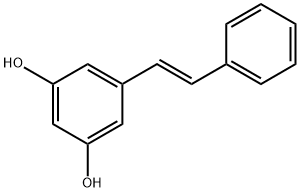
What is PINOSYLVIN?
Chemical properties
Off-white crystalline powder
The Uses of PINOSYLVIN
Pinosylvin, a pre-infectious stilbenoid toxin, is used to study its properties as a fungitoxin and therapeutic agent. Pinosylvin is used as a representative stilbene to study its biological actions and therapeutic value in processes such as cell survival, apoptosis and cell mobility.
Definition
ChEBI: Pinosylvin is a stilbenol.
General Description
This substance is a primary reference substance with assigned absolute purity (considering chromatographic purity, water, residual solvents, inorganic impurities). The exact value can be found on the certificate. Produced by PhytoLab GmbH & Co. KG
Enzyme inhibitor
This trans-stilbene derivative (FW = 212.25 g/mol; CAS 102-61-4; M.P. = 155.5-156°C; low solubility in water), also known as (E)-3,5-stilbenediol and trans-3,5-dihydroxystilbene and named systematically as 5-[(E)-2- phenylethenyl]benzene-1,3-diol, occurs naturally in the hardwood of pine and other woody plants. Pinosylvin exxhibits micromolar Ki values for specific isozymes of stilbene synthase and chalcone synthase. Target(s): chalcone synthase; stilbene synthase; tyrosinase, or monophenol monooxygenase.
Properties of PINOSYLVIN
| Melting point: | 153-157 °C |
| Boiling point: | 312.08°C (rough estimate) |
| Density | 1.1035 (rough estimate) |
| refractive index | 1.6000 (estimate) |
| storage temp. | 2-8°C |
| solubility | DMF: 10mg/mL; DMF:PBS (pH 7.2) (1:50): 0.01mg/mL; DMSO: 10mg/mL; Ethanol: 20mg/mL; Ethanol:PBS (pH 7.2) (1:50): 0.01mg/mL |
| form | A solid |
| pka | 9.34±0.10(Predicted) |
| color | White to off-white |
| BRN | 1870942 |
| InChI | InChI=1S/C14H12O2/c15-13-8-12(9-14(16)10-13)7-6-11-4-2-1-3-5-11/h1-10,15-16H/b7-6+ |
Safety information for PINOSYLVIN
| Signal word | Warning |
| Pictogram(s) |
 Exclamation Mark Irritant GHS07  Environment GHS09 |
| GHS Hazard Statements |
H315:Skin corrosion/irritation H319:Serious eye damage/eye irritation H335:Specific target organ toxicity, single exposure;Respiratory tract irritation H400:Hazardous to the aquatic environment, acute hazard |
| Precautionary Statement Codes |
P273:Avoid release to the environment. P302+P352:IF ON SKIN: wash with plenty of soap and water. P305+P351+P338:IF IN EYES: Rinse cautiously with water for several minutes. Remove contact lenses, if present and easy to do. Continuerinsing. |
Computed Descriptors for PINOSYLVIN
| InChIKey | YCVPRTHEGLPYPB-VOTSOKGWSA-N |
| SMILES | C1(O)=CC(/C=C/C2=CC=CC=C2)=CC(O)=C1 |
New Products
Tert-butyl bis(2-chloroethyl)carbamate 4-Methylphenylacetic acid N-Boc-D-alaninol N-BOC-D/L-ALANINOL 3-Morpholino-1-(4-nitrophenyl)-5,6-dihydropyridin- 2(1H)-one Furan-2,5-Dicarboxylic Acid Tropic acid DIETHYL AMINOMALONATE HYDROCHLORIDE 1,1’-CARBONYLDIIMIDAZOLE R-2-BENZYLOXY PROPIONIC ACID 1,1’-CARBONYLDI (1,2-4 TRIAZOLE) N-METHYL INDAZOLE-3-CARBOXYLIC ACID (2-Hydroxyphenyl)acetonitrile 4-Bromopyrazole 5-BROMO-2CYANO PYRIDINE 5,6-Dimethoxyindanone 5-broMo-2-chloro-N-cyclopentylpyriMidin-4-aMine 2-(Cyanocyclohexyl)acetic acid 4-methoxy-3,5-dinitropyridine 2-aminopropyl benzoate hydrochloride 1-(4-(aminomethyl)benzyl)urea hydrochloride diethyl 2-(2-((tertbutoxycarbonyl)amino) ethyl)malonate tert-butyl 4- (ureidomethyl)benzylcarbamate Ethyl-2-chloro((4-methoxyphenyl)hydrazono)acetateRelated products of tetrahydrofuran
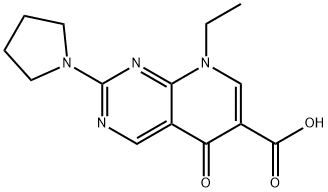

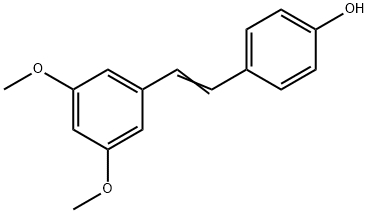
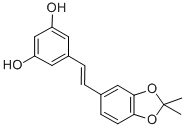
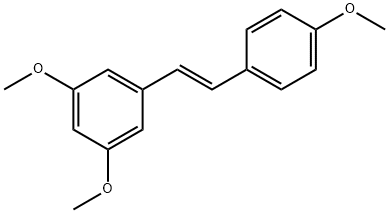
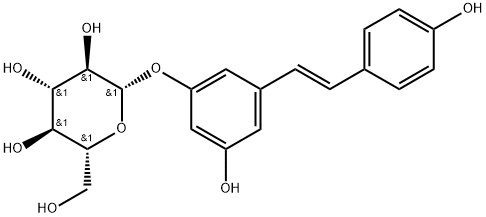
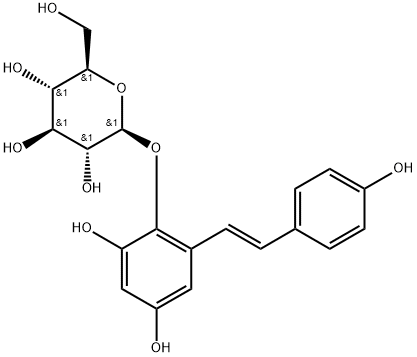

You may like
-
 Pinosylvin CAS 22139-77-1View Details
Pinosylvin CAS 22139-77-1View Details
22139-77-1 -
 Pinosylvin CAS 22139-77-1View Details
Pinosylvin CAS 22139-77-1View Details
22139-77-1 -
 1975-50-4 98%View Details
1975-50-4 98%View Details
1975-50-4 -
 2-HYDROXY BENZYL ALCOHOL 98%View Details
2-HYDROXY BENZYL ALCOHOL 98%View Details
90-01-7 -
 2-Chloro-1,3-Bis(Dimethylamino)Trimethinium Hexafluorophosphate 221615-75-4 98%View Details
2-Chloro-1,3-Bis(Dimethylamino)Trimethinium Hexafluorophosphate 221615-75-4 98%View Details
221615-75-4 -
 14714-50-2 (2-Hydroxyphenyl)acetonitrile 98+View Details
14714-50-2 (2-Hydroxyphenyl)acetonitrile 98+View Details
14714-50-2 -
 118753-70-1 98+View Details
118753-70-1 98+View Details
118753-70-1 -
 733039-20-8 5-broMo-2-chloro-N-cyclopentylpyriMidin-4-aMine 98+View Details
733039-20-8 5-broMo-2-chloro-N-cyclopentylpyriMidin-4-aMine 98+View Details
733039-20-8